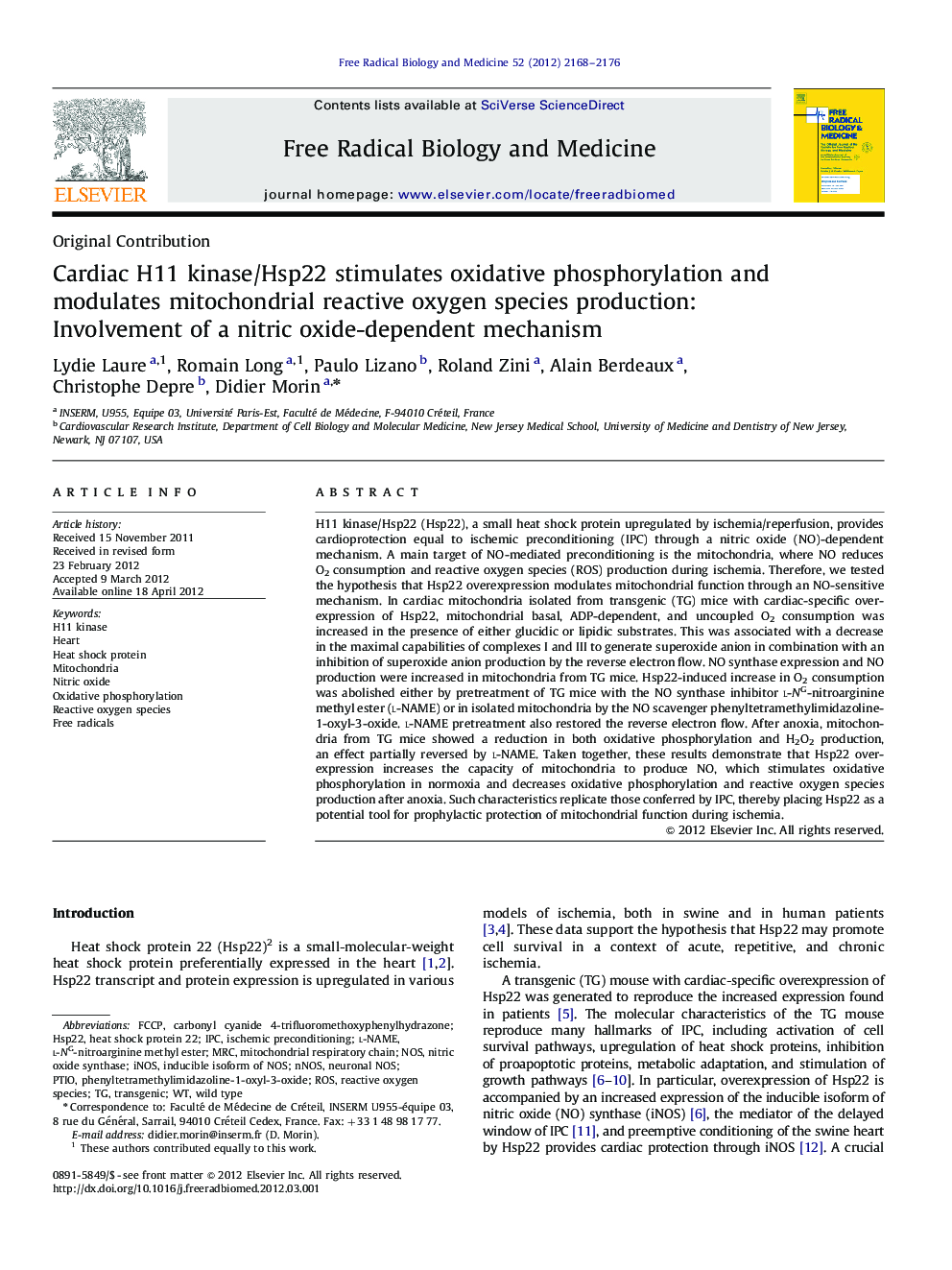| کد مقاله | کد نشریه | سال انتشار | مقاله انگلیسی | نسخه تمام متن |
|---|---|---|---|---|
| 1908819 | 1534989 | 2012 | 9 صفحه PDF | دانلود رایگان |

H11 kinase/Hsp22 (Hsp22), a small heat shock protein upregulated by ischemia/reperfusion, provides cardioprotection equal to ischemic preconditioning (IPC) through a nitric oxide (NO)-dependent mechanism. A main target of NO-mediated preconditioning is the mitochondria, where NO reduces O2 consumption and reactive oxygen species (ROS) production during ischemia. Therefore, we tested the hypothesis that Hsp22 overexpression modulates mitochondrial function through an NO-sensitive mechanism. In cardiac mitochondria isolated from transgenic (TG) mice with cardiac-specific overexpression of Hsp22, mitochondrial basal, ADP-dependent, and uncoupled O2 consumption was increased in the presence of either glucidic or lipidic substrates. This was associated with a decrease in the maximal capabilities of complexes I and III to generate superoxide anion in combination with an inhibition of superoxide anion production by the reverse electron flow. NO synthase expression and NO production were increased in mitochondria from TG mice. Hsp22-induced increase in O2 consumption was abolished either by pretreatment of TG mice with the NO synthase inhibitor l-NG-nitroarginine methyl ester (l-NAME) or in isolated mitochondria by the NO scavenger phenyltetramethylimidazoline-1-oxyl-3-oxide. l-NAME pretreatment also restored the reverse electron flow. After anoxia, mitochondria from TG mice showed a reduction in both oxidative phosphorylation and H2O2 production, an effect partially reversed by l-NAME. Taken together, these results demonstrate that Hsp22 overexpression increases the capacity of mitochondria to produce NO, which stimulates oxidative phosphorylation in normoxia and decreases oxidative phosphorylation and reactive oxygen species production after anoxia. Such characteristics replicate those conferred by IPC, thereby placing Hsp22 as a potential tool for prophylactic protection of mitochondrial function during ischemia.
► We studied cardiac H11 kinase/Hsp22 overexpression and mitochondrial function.
► Hsp22 overexpression increases the capacity of mitochondria to produce NO.
► Hsp22 stimulates oxidative phosphorylation in normoxia.
► Hsp22 decreases oxidative phosphorylation and ROS production after anoxia.
► The effect of Hsp22 on mitochondrial function is due to an NO-sensitive mechanism.
Journal: Free Radical Biology and Medicine - Volume 52, Issues 11–12, 1–15 June 2012, Pages 2168–2176